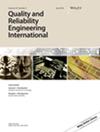A dual‐channel transferable RUL prediction method integrated with Bayesian deep learning and domain adaptation for rolling bearings
IF 2.8
3区 工程技术
Q3 ENGINEERING, INDUSTRIAL
引用次数: 0
Abstract
Many deep learning methods typically assume that the marginal probability distribution between the training and testing bearing data is similar or the same. However, the probability distribution of rolling bearings may deviate significantly under diverse working conditions. To address the above limitations, a novel transferable remaining useful life (RUL) prediction method integrated with Bayesian deep learning and unsupervised domain adaptation (DA) is proposed. First, the signal alignment is executed on the data after the first prediction time to maintain the same granularity and scale across both source and target domains. Second, the multi‐domain features are extracted and sent into the dual‐channel Transformer network (DCTN) incorporating the convolutional block attention module (CBAM) to adequately exploit the abundant degradation information. Then, the DA module is incorporated into the model to mitigate the distribution discrepancies of the extracted high‐level merged features between the source and target domains. Finally, by applying the variational inference method, the DCTN‐CBAM is extended to the Bayesian deep neural network, and the RUL prediction and its corresponding confidence intervals can be conveniently derived. In addition, the generalization capability and effectiveness are validated through six bidirectional transfer RUL prediction tasks across two rolling bearing datasets. The experimental results demonstrate that it could provide a more reliable RUL prediction and efficiently account for the prediction uncertainty.一种与贝叶斯深度学习和滚动轴承领域适应性相结合的双通道可转移 RUL 预测方法
许多深度学习方法通常假设训练和测试轴承数据的边际概率分布相似或相同。然而,在不同的工作条件下,滚动轴承的概率分布可能会有很大偏差。针对上述局限性,我们提出了一种新颖的可转移剩余使用寿命(RUL)预测方法,该方法集成了贝叶斯深度学习和无监督域适应(DA)。首先,在第一次预测后对数据执行信号对齐,以保持源域和目标域的粒度和规模相同。其次,提取多域特征并将其发送到包含卷积块注意模块(CBAM)的双通道变压器网络(DCTN)中,以充分利用丰富的退化信息。然后,在模型中加入 DA 模块,以减少源域和目标域之间提取的高级合并特征的分布差异。最后,通过应用变异推理方法,将 DCTN-CBAM 扩展到贝叶斯深度神经网络,并方便地得出 RUL 预测值及其相应的置信区间。此外,还通过两个滚动轴承数据集的六个双向传递 RUL 预测任务验证了其泛化能力和有效性。实验结果表明,它可以提供更可靠的 RUL 预测,并有效地考虑预测的不确定性。
本文章由计算机程序翻译,如有差异,请以英文原文为准。
求助全文
约1分钟内获得全文
求助全文
来源期刊
CiteScore
4.90
自引率
21.70%
发文量
181
审稿时长
6 months
期刊介绍:
Quality and Reliability Engineering International is a journal devoted to practical engineering aspects of quality and reliability. A refereed technical journal published eight times per year, it covers the development and practical application of existing theoretical methods, research and industrial practices. Articles in the journal will be concerned with case studies, tutorial-type reviews and also with applications of new or well-known theory to the solution of actual quality and reliability problems in engineering.
Papers describing the use of mathematical and statistical tools to solve real life industrial problems are encouraged, provided that the emphasis is placed on practical applications and demonstrated case studies.
The scope of the journal is intended to include components, physics of failure, equipment and systems from the fields of electronic, electrical, mechanical and systems engineering. The areas of communications, aerospace, automotive, railways, shipboard equipment, control engineering and consumer products are all covered by the journal.
Quality and reliability of hardware as well as software are covered. Papers on software engineering and its impact on product quality and reliability are encouraged. The journal will also cover the management of quality and reliability in the engineering industry.
Special issues on a variety of key topics are published every year and contribute to the enhancement of Quality and Reliability Engineering International as a major reference in its field.

 求助内容:
求助内容: 应助结果提醒方式:
应助结果提醒方式:


